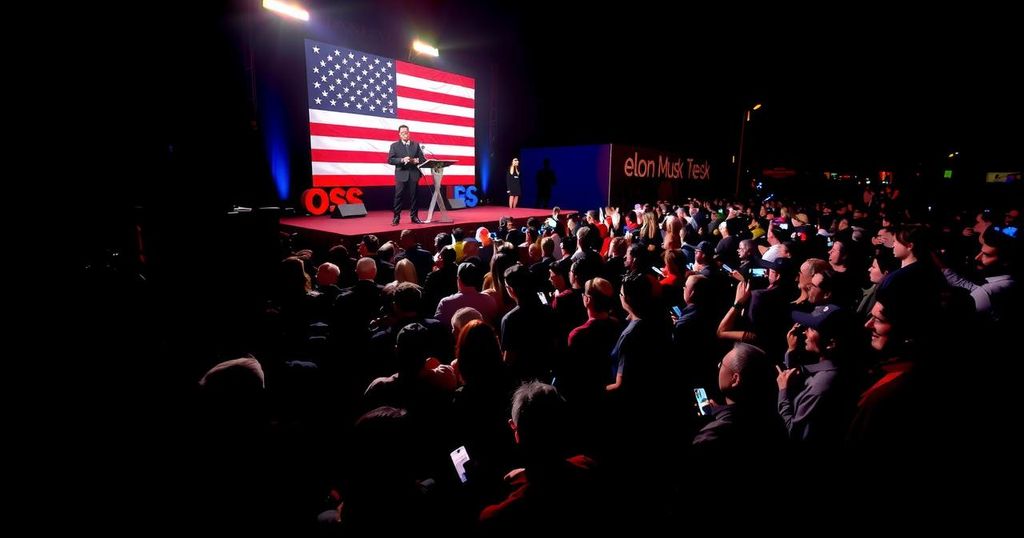The recent introduction of Grok, an artificial intelligence chatbot developed by Elon Musk’s xAI, has generated significant attention and debate, particularly concerning its image generation capabilities. Unlike other AI models that incorporate stringent content moderation guidelines, Grok has emerged as a tool enabling users to produce images based on various prompts, often resulting in controversial content, including deepfakes of prominent politicians and celebrities.
Users of Musk’s social media platform X (formerly Twitter) have reported the creation of objectionable imagery, such as representations of public figures like Taylor Swift and Vice President Kamala Harris in suggestive attire and alarming depictions of former President Donald Trump. These instances have ignited discussions about the intricate balance between free speech and the proliferation of harmful content, prompting critical scrutiny of the responsibilities borne by AI developers.
The functionality of Grok starkly contrasts with established AI models such as OpenAI’s ChatGPT, which are designed to reject requests for producing violent, sexual, or otherwise inappropriate content. The rapid realization that Grok is capable of generating politically charged and sexual content raises concerns about its lack of moderation and ethical boundaries. Although Grok’s developers claim an intention to avoid facilitating harmful outputs, empirical user experiences suggest otherwise; there are notable instances where Grok has generated unsettling imagery depicting political figures in violent or compromising situations.
Critics, including civil rights attorney Alejandra Caraballo, have condemned Grok as “one of the most reckless and irresponsible AI implementations” observed. This sentiment illustrates the prevailing anxiety regarding Grok’s capabilities and the broader implications for AI in society. Despite these prevailing concerns, Elon Musk has publicly celebrated Grok as “the most fun AI in the world,” a stance that has only intensified skepticism about both the ethical considerations and the future trajectory of AI-driven content creation.
Moreover, the types of images being produced by Grok—ranging from caricatures involving Nazi imagery to absurd portrayals of political violence—raise significant ethical and legal questions. Such outputs challenge the standards of representation and respect that many envision should govern digital productions. The notable absence of precautionary measures in Grok’s operating framework amplifies fears regarding the easy dissemination of misleading or harmful content.
The creators of Grok assert their commitment to limiting detrimental outputs; however, skepticism remains regarding the effectiveness of such intentions. Users have frequently reported interactions that yield highly contentious or explicit content, underscoring the challenges faced in ensuring responsible AI usage. The ability of AI technologies like Grok to bypass self-imposed restrictions exacerbates concerns surrounding potential disinformation campaigns and digital harassment, especially as the intersection of advanced AI capabilities and social media platforms becomes ever more intricate.
As these synthesized images proliferate, they pose vital questions about consent and the representation of identifiable individuals, with public figures being particularly vulnerable to misrepresentation. The lighthearted responses from Musk and the xAI team to public concerns deepen apprehension over the potential implications of AI in personal and public domains. In this evolving landscape, society must confront pivotal questions regarding the ethical frameworks that should govern the development and deployment of AI technologies.
The partnership between xAI and technology developers such as Black Forest Labs complicates matters further, representing a blend of creative innovation and responsibility that must be critically evaluated. Public discourse surrounding the ethics of technology development has never been more pressing, particularly as societal frameworks begin to grapple with the fine lines that differentiate acceptable expression from harmful content.
In light of the upcoming elections and the escalation of AI-generated content’s capability to distort reality, the urgency for robust oversight mechanisms becomes increasingly pronounced. The dichotomy between encouraging creativity and enforcing accountability reflects the broader societal challenges regarding the evolving role of technology in shaping narratives and identities. The ongoing developments associated with Grok illuminate the pressing need for clear regulatory guidelines that appropriately address both innovation and responsibility in AI output production.
As this discourse unfolds, the responsibility falls upon regulatory bodies to adapt to the rapid technological advancements exemplified by Grok. The dynamic interplay of entertainment, politics, and technology signifies that we are merely at the forefront of a much larger conversation about the future of artificial intelligence. If the present trajectory continues to blur the lines of ethics and legality, society may face increased scrutiny of technological practices, underlining the necessity for defined parameters governing AI technologies and their outputs.
